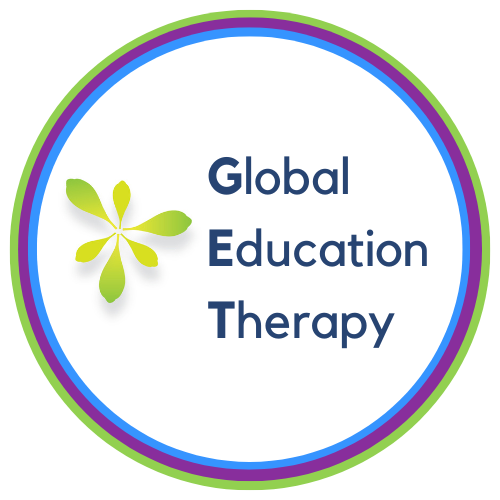Help, My Child Has a Lisp! A Guide to Speech Sound Disorders
Global Education Therapy, formally known as Worldwide Speech, is the pioneer of online education, speech therapy, and occupational therapy. We have over 12 years of experience providing services online.
We have all heard kids mispronounce words while wholeheartedly believing they said them correctly. You may even try to correct them, but when they try to imitate it, the incorrect sound pops out again.
Speech Sound Disorders
First, it’s important to explain the difference between speech and language. Language is how we express and understand ourselves and others whereas speech refers to the sounds we use to speak.
First, it’s important to explain the difference between speech and language. Language is how we express and understand ourselves and others whereas speech refers to the sounds we use to speak.
A speech sound disorder is when a child struggles to say certain sounds or patterns of sounds. The most common speech sound disorder is an articulation disorder. Articulation disorders, which are sometimes called speech impediments, lisps, etc, are when saying certain speech sound is a struggle, like having a hard time saying “r,” or saying “th” instead of “s,” like “think” for “sink.”
Another speech sound disorder is called phonological disorder. A phonological disorder is a pattern of errors (see phonological processes chart). Some of the most common phonological error patterns include fronting, stopping, and final consonant deletion. These patterns affect more than one sound. This is often seen in children with childhood apraxia of speech (CAS).
While it seems cut and dry, it can be difficult to differentiate between articulation disorders and phonological disorders. This is where the umbrella term “speech sound disorders” comes in [1].
[1].
Who is at risk for a speech sound disorder?
Those with special needs such as…
Developmental disorders such as autism
Genetic disorders such as Down syndrome
Hearing loss or frequent ear infections
Nervous system disorders such as cerebral palsy
Physical problems such as cleft lip or palate
Low education level of the parent
Lack of support for learning in the home [3].
Late Bloomers
It is important to draw a line between a speech sound delay and a speech sound disorder. A delay is when speech sounds are acquired in a normal pattern, just a little later than typical. A speech sound disorder on the other hand is when a child cannot produce specific speech sounds correctly. For example, a sound substitution at 2 years old may be age-appropriate, but the same error at 5 years old might need remediation. A website called Kidmunicate put together a list of speech milestones and red flags. Always keep in mind that children develop at different rates [4].
How common are speech sound disorders?
Overall, 2.3%-24.6% of school-aged children are estimated to have a speech delay or speech sound disorder. There are also differences in prevalence based on intersectionality. For example, prevalence rates are ~5.3% of African American children vs. 3.8% in white children. Speech sound disorders are also more prevalent in boys than girls, with a ratio of 1.5-1.8:1 [1].
Signs and symptoms
Omissions/deletions: “cu” for “cup” or “poon” for “spoon”
Substitutions: “thing” for “sing” or “wabbit” for “rabbit”
Additions: “buhlack” for “black”
Distortions: lateral lisp – air comes out the sides of cheeks making a distorted “s”
Syllable-level errors: “tephone” for “telephone” [1]
Considerations
Both accents and dialects can influence speech sounds. The first language acquired by a bilingual or multilingual individual can influence speech sound production and phonological rules of other languages learned.
Why can’t my child hear their errors?
Self-awareness refers to a child’s ability to monitor themselves to figure out if they are doing something correctly. Most children with speech sound disorders are unaware of their incorrect productions. However, self-awareness is extremely important for a child to carry their skills from speech therapy to everyday life [7].
When is it time to see a speech therapist?
Some therapists suggest around 4 years old if the child is ready for therapy, taking into consideration the child’s attention and listening skills, the ability to follow instructions, and whether or not they can produce the sound on their own [8]. This helps maximize success. Typically, if your child’s speech sound errors interfere with overall communication and intelligibility (e.g., the ability to be understood) by unfamiliar listeners around age 4, it’s best to err on the side of caution and visit a speech pathologist for a comprehensive assessment.
How can a speech-language pathologist help?
Specific instruction: When teaching a new sound, a speech-language pathologist (SLP) will first teach your child about how to correctly say their target sound. For example, if a child has a frontal lisp (e.g., thing for sing) the SLP will instruct the student to place their tongue behind their upper teeth.
Sound discrimination: Next, the SLP will say a word with the student’s target sound in two different ways. First, they will demonstrate the correct production, then imitate the child’s articulation error. The student will label if it was a “strong s” or a “weak s.”
Therapy hierarchy: The SLP will help the child correctly produce the sound in isolation (e.g. “sssss”). As the child masters the production of their target sound, they move up the following hierarchy.
If you are questioning whether or not your child may have a speech sound delay or disorder, schedule a free 20-minute consultation! Our expert speech therapists are dedicated to easing your parenting struggles with convenient online education via telehealth
Still have questions? You can always reach out to Global Education Therapy! Go to Global Education Therapy for our:
FREE parent handouts
FREE parent resource videos
FREE online parent support group
FREE online webinars
FREE 20 min consultation with Global Education Therapy to see if we can GET the help your child needs!
References
https://www.asha.org/practice-portal/clinical-topics/articulation-and-phonology/#collapse_2
https://www.asha.org/public/speech/disorders/Speech-Sound-Disorders/
https://www.stanfordchildrens.org/en/topic/default?id=speech-sound-disorders-in-children-160-236
https://kidmunicate.com/speech_language_disorders/speech-delay-or-disorder/
https://www.speechandlanguagekids.com/increase-self-awareness-and-carry-over/
https://www.mybaba.com/lisps-young-children-worried-can-help/





